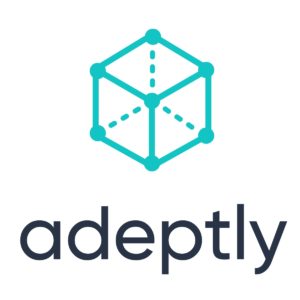Discover Impactful Methods For In-Office Training
Delete that PowerPoint presentation, Jeff. It’s time to embrace a new style of training that’s interactive, proven to be more effective, and a lot more fun. Interactive training rarely requires additional input from the trainer, nor does it require expert knowledge in teaching technologies. For the most part, interactive training requires a basic understanding of using desktop computers and mobile phones, and that’s it. Here are the benefits you can expect when you switch to interactive learning.
1. An Enhanced Learning Environment Fosters Creativity
Let’s take a step back from the actual learning tasks and consider the learning experience in a wider scope. The learning environment that employees typically encounter is not much different from their work environment. Workshops can be like meetings, training tasks are like ordinary work tasks; there’s no space to think, explore, or be creative when training is confined to a "working" mindset. Yet our best ideas seem to come from the most unconventional places [1], like in the shower, during a walk, or zoning out as you watch Frozen with your 4-year old for the billionth time.
In 2010, 1,500 CEOs selected creativity as their number one factor behind their success [2]. If creativity is so important to growth and performance, our Learning and Development (L&D) programs should cater to it. Yet for the most part, they don’t.
Taking a more interactive approach offers some good solutions. Thinking about your employees’ learning experience as a whole, here’s where an enhanced learning environment could offer some good solutions. If the L&D programs are run on a learning portal, which is visually engaging and distinctly separate from work platforms, you can encourage a different mindset—one that allows growth—during training. Employees can explore their work tasks on their own, with chatbots providing responses to frequently asked questions and basic support requests. L&D providers can step back and observe, spending resources on analyzing and acting upon data, rather than hand-holding employees through the process.
Learning portals and platforms can be anything from a separate space that triggers the learner to start using play and creativity to learn, or a complete package that absorbs a whole course of learning into a serious learning game. By using an interactive, graphical environment that recreates the workplace in a fun way, you can transform meeting rooms, factory floors, and science labs into places of learning and growth instead of de-motivating and difficult work tasks. Enabling gamification of a learning topic, or game-based learning, allows employees to enjoy a better learning experience.
2. Improved Decision-Making Through Mindful Practice
Some of the best ways to engage employees in both their work and training are to empower them to make better decisions. Much research has been done on how the emotional parts of our brains—our "dog brain"—has a huge impact on our decision-making [3], our hunches or gut feelings, and, ultimately, our success.
Interactive learning presents an opportunity to train our animalistic brains, become more mindful of our conscious feelings, and make better decisions in the workplace.
Interactive learning that incorporates Virtual Reality, Augmented Reality, or Mixed Reality scenarios presents an opportunity for employees to test and explore their emotional reactions to certain scenarios. Heated meetings can be tamed and calmed into rational, mindful discussions with effective decision-making. Real-life, panic-inducing situations needn’t be faced by individuals without any prior experience. The trainee pilot in the nose-diving plane can act calmly and mindfully in those precious seconds to understand and alter their reality.
In truth, no one was saved because no one was dying, yet for that pilot, it felt real, so they responded accordingly. For an employee working at a nuclear reactor, reactive stress can be replaced by rational thought as they choose what steps to take to avert any crisis. For an NFL player, instinctive habit-like reactions can be learned, so that players’ bodies subconsciously respond to the opposing team’s movements. All of these scenarios—the plane, the nuclear reactor, and the NFL training—could be taught passively and linearly on a flipchart, but for a truly effective learning experience, interactive training puts each learner in the driving seat and places the ultimate decision-making process in their hands.
3. Reinforcement Of Learning Through Feedback
Passive, linear, one-directional learning leaves little room for immediate feedback. Learners must absorb, like a sponge, great detail and knowledge on a particular topic, and later demonstrate they understand it before receiving feedback at the end of the session. Interactive learning offers instant feedback. It requires employees to respond to the content, reinforcing their learning, all by themselves with appropriate support. Instead of employers hand-holding, spoon-feeding, or simply telling employees how to perform, interactive learning allows employees to make mistakes, understand why, and do better next time.
An additional benefit to the feedback is the empowerment of employers. Employers can get unique insights into employees’ ways of approaching difficult tasks. Assume Adrian is playing a serious learning game. He enters a stage where he must respond under time-pressure. As he plays, he receives feedback on his performance. This helps him understand where he needs to improve but also reinforces his strengths. He is able to answer some questions rapidly, whilst others take a little while for him to understand. As he plays, training teams can assess his performance in real time.
This is completely different to traditional learning styles, whereby feedback is rarely used to reinforce the material or learning, but instead is just a flat "grade" at the end of a session, and a note on Adrian’s record that he doesn’t do well in time-pressured activities. In this instance, employers can collate Adrian’s data, use it to create a benchmark along with other employees' performances, and create a visual map of who holds which strengths and weaknesses in each team. Employee learning and behavior can be summarized into a dashboard of useful information. Adrian and his employer are then empowered to address why he performs poorly in time-pressured environments. Is he having difficulty with confidence, comprehension, or is his brain struggling to compute the information? The data holds the answers.
4. Higher Levels Of Engagement
Interactive learning has been consistently demonstrated to lead to higher levels of engagement compared to a traditional classroom setting [4]. This is because interactive learning is immersive, can be personalized, and can offer opportunities for micro and adaptive learning. All of these factors offer a better learning experience, allowing for a better understanding of the material. Gamification of learning content adds a degree of fun and challenge to the learning process. Serious learning games, or game-based learning, enable training providers to seamlessly integrate online learning content with play; one of the best ways to engage learners. “Play leads to brain plasticity, adaptability, and creativity,” states Stuart Brown, founder of the National Institute for Play.
If the lines of learning, work, and play are blurred, then Learning and Development programs can spark an engagement that is infectious, flowing from training sessions, into the work approach that employees adopt. Employee engagement isn’t just about performance statistics, it’s about how much each employee is emotionally invested in their work and the business [5].
Interactive technology that combines play, encourages a growth mindset, and enables autonomous learning is a key pillar to effective training. Interactive games that challenge learners and present the content in engaging ways spark creativity and development.
5. Greater Retention Rates
Along with higher levels of engagement, greater retention rates can be expected too. Typical learning practices tend to rely on non-contextual fact-retention and quick comprehension of the topic. Not all learners can memorize material without a concrete and relevant context, which is the foundation of their understanding. Interactive learning immerses learners into virtual, partial, or Augmented Reality learning spaces and automatically reduces these two barriers to learning. This results in better recall, better understanding, and more creative solutions from learners.
6. Increased Motivation In Learners
If engaging learners is one challenge, motivating them is a completely different hurdle. Just capturing attention is not enough. An employee might feel engaged and be focused and attentive toward a certain task, but if the employee feels like they’re doing it because they "have to," and for the most part, they really don’t want to, their lack of motivation will affect their learning.
Interactive technologies tend to be more appealing and offer interesting ways of learning information. Learners are likely to be more motivated to attend and try hard at training if the training requires playing a video game as opposed to giving a one-minute elevator pitch in an awkward Zoom training session. It’s easier for employees to become engaged and motivated if the training is interactive and gives the employee an opportunity to become creative with their learning process.
7. Increased Learning Efficiency
Despite often being delivered in a linear manner, training goals are multi-faceted. Training must allow for both personal and professional growth of the individual employee, their team, and their department. Depending on how performance is measured, goals may shift accordingly. Rajesh may need to constantly deliver 80% achievement rates in his training sessions to meet his own personal goals, but compared to his department, he typically scores 7% higher than the rest. Calculating these scores can become time-consuming and can mean that personalized development opportunities are missed. Rajesh may well have the ability to perform at a 90% achievement rate, but his development is blocked or slowed by the departmental goals of benchmarking everyone at 80%.
Manually collating data is increasingly a redundant task, as technology can do this so easily for us. The correct program, grounded in learning technology and interactive learning practices, can allow for individual growth, personalized support where required, and streamlining of data to assist with the management of the entire process. Managing learning goals is made easier, freeing up time for teachers and trainers. Interactive learning is the cornerstone of enhanced learning environments, AI-backed training, and personalized learning journeys.
8. Increased Availability Of Resources
Interactive technologies offer a huge variety of technology options, from serious learning games to gamified content and enhanced learning platforms to data-driven Learning and Development strategies. Further, the majority of these experiences are flexible and mobile; employees can fit learning into their schedule in a dynamic and exciting way. Moving the majority of learning into a personalized, online space frees up time for trainers to offer more individualized support. It means star performers, like Rajesh, who we talked about earlier, can push their development a little further, whilst less abled individuals can be assessed to understand where they may be encountering difficulties. With interactive training, teachers can be confident that data is being quietly collected in the background, freeing them up to plan learning strategies or offer much needed one-on-one training for certain individuals.
Interactive Training Will Improve Your Workplace
There are multiple ways that interactive learning can have hugely beneficial impacts on your employees’ learning. Interactive training engages, motivates, and stimulates each individual, emotionally connecting them to the task, and often putting them in the driver’s seat. Interactive learning brings out the leader in each individual, placing more emphasis on their enjoyment of learning, which in turn leads to higher productivity and performance. Whether it’s an interactive training session via Zoom, with personalized exercises, or a streamlined online virtual learning environment, packed full of exciting virtual training, interactive training is flexible, fun, and effective. Above all, adopted correctly, it is guaranteed to have a hugely positive impact on your workplace.
References:
[1] CHARACTERIZING REFLECTIVE PRACTICE IN DESIGN – WHAT ABOUT THOSE IDEAS YOU GET IN THE SHOWER?
[2] IBM 2010 Global CEO Study: Creativity Selected as Most Crucial Factor for Future Success
[4] How technology can boost student engagement
[5] 8 Employee Engagement Statistics You Need to Know in 2020


